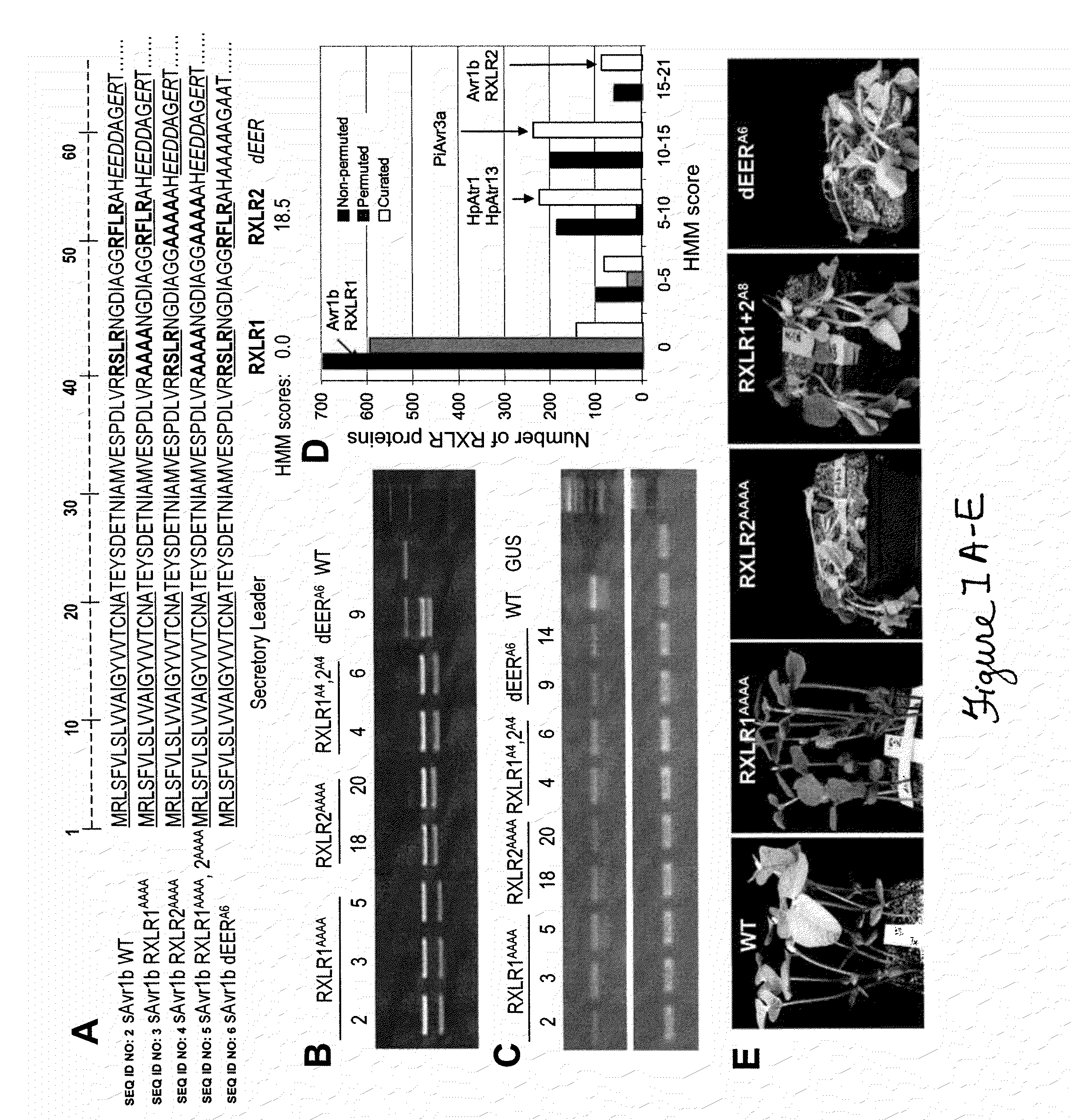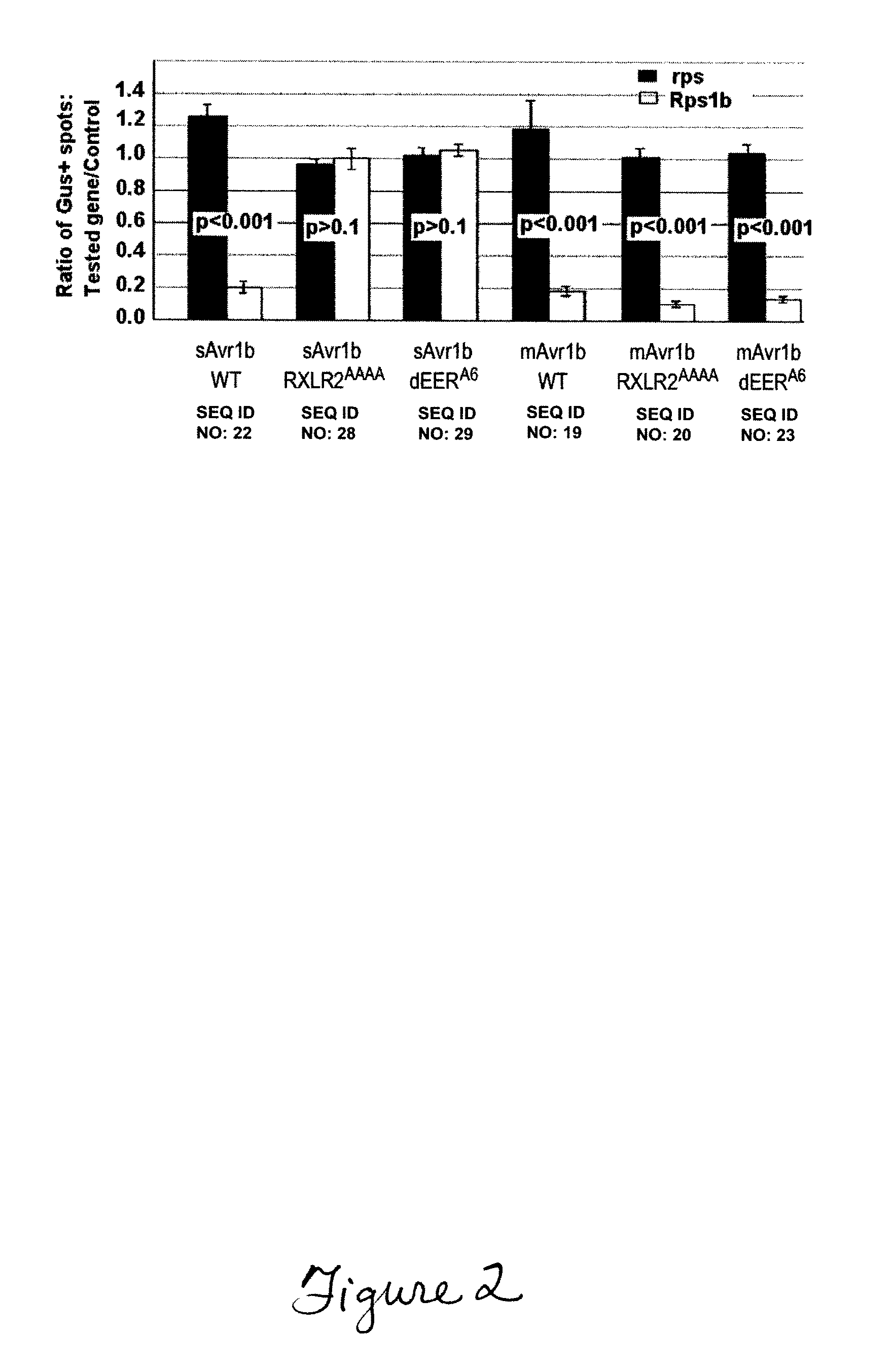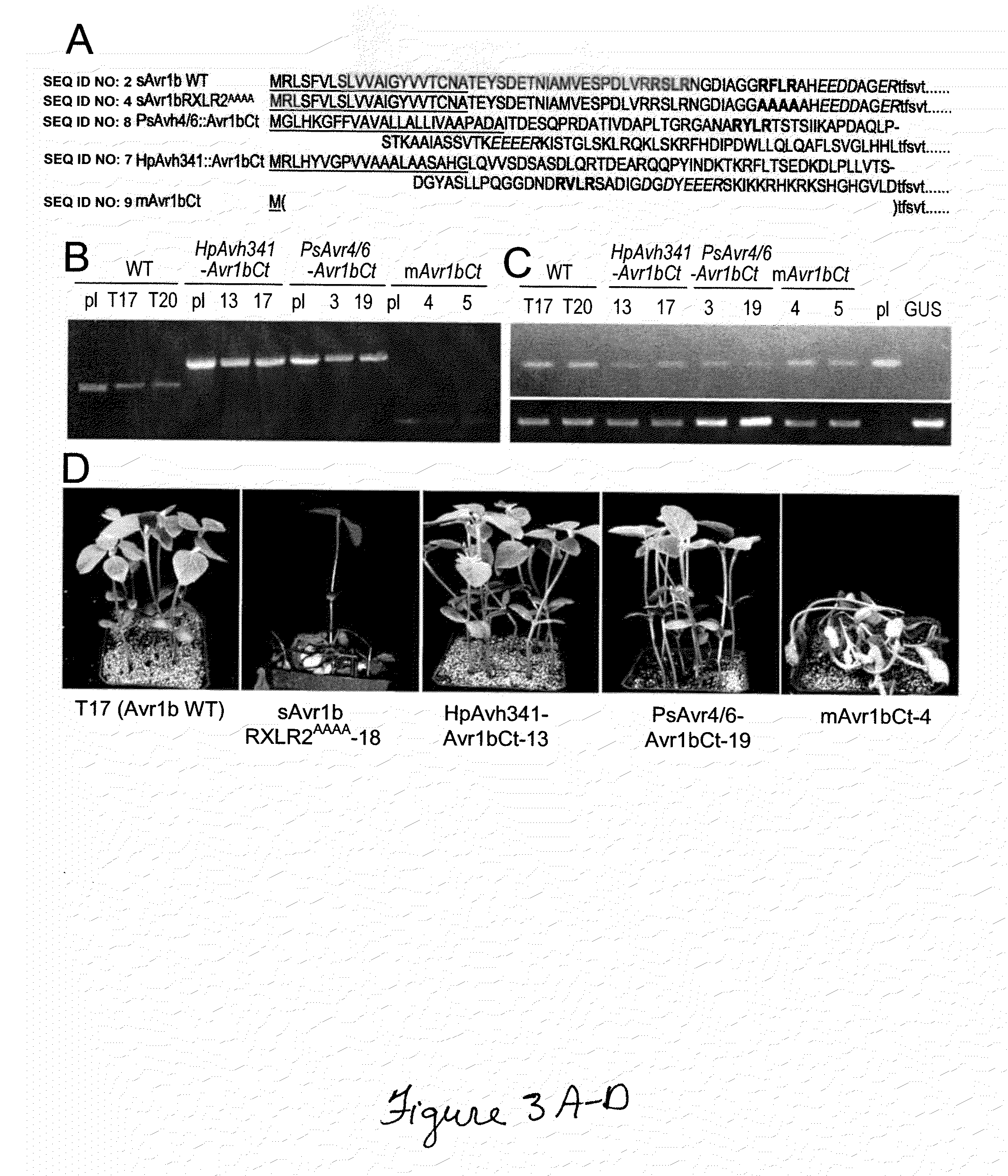Compositions and methods to protect cells by blocking entry of pathogen proteins
a technology of pathogen proteins and cell membranes, applied in the field of microbial prevention, can solve the problems of eukaryotic pathogens of plants, parasites and fungi are especially difficult to develop drugs, and the toxic to humans are toxic to these organisms, so as to prevent the infection of host cells
- Summary
- Abstract
- Description
- Claims
- Application Information
AI Technical Summary
Benefits of technology
Problems solved by technology
Method used
Image
Examples
example 1
RXLR-mediated entry of Phytophthora Sojae Effector Avr1b (Seq Id NO: 2) into Soybean Cells does not Require Pathogen Encoded Machinery
[0056]Effector proteins secreted by oomycete and fungal pathogens have been inferred to enter host cells, where they interact with host resistance gene products. Using the effector protein Avr1b of Phytophthora sojae, an oomycete pathogen of soybean, we show that a pair of sequence motifs, RXLR and dEER, plus surrounding sequences, (SEQ ID NO: 46) are both necessary and sufficient to deliver the protein into plant cells. Particle bombardment experiments demonstrate that these motifs function in the absence of the pathogen, indicating that no additional pathogen encoded machinery is required for effector protein entry into host cells. Furthermore, fusion of the Avr1b RXLR and dEER domain to green fluorescent protein (GFP) allows GFP to enter soybean root cells autonomously. The conclusion that RXLR and dEER serve to transduce oomycete effectors into ho...
example 2
Effector Host-Targeting Signals of Eukaryotic Pathogens Bind Phosphoinositides or Phosphatidic Acid
[0073]Pathogens of both plants and animals produce effectors and / or toxins that act within the cytoplasm of host cells to suppress host defenses and cause disease. Effector proteins of oomycete plant pathogens utilize N-terminal motifs, RXLR and dEER, to enter host cells, and a similar motif, Pexel (RxLxE / D / Q), is used by Plasmodium effectors to enter erythrocytes. This Example shows that effectors of fungal plant pathogens contain functional variants of the RXLR and dEER motifs, and that the oomycete and fungal RXLR and dEER motifs, as well as the Plasmodium Pexel motifs, are responsible for binding of the effectors to phosphatidyl-inositol-3-phosphate (PI-3-P) and / or phosphatidyl-inositol-4-phosphate (PI-4-P). Stimulation of host cell entry by PI-4-P, and inhibition by inositol 1,4 diphosphate suggest that phosphoinositide binding mediates cell entry. All the effectors could also ent...
example 3
Assay for Screening Compound Libraries to Identify Novel Compounds that Interfere with the RXLR and dEER-Mediated Uptake of Effector Proteins into Plant or Human Cells
[0096]The binding of phosphoinositides (PI-3-P or PI-4-P) and phosphatidic acid to effector cell entry domains indicates that these phospholipids may serve as a cell entry receptors. Increasing the concentration of free phosphoinositide such as di-octanoyl-PI-4-P by exogenous addition stimulated RXLR and dEER-mediated uptake of the Avr1b GFP fusion, Avr1b(N)-GFP, into soybean roots and human cells. Furthermore, preincubation with inositol 1,4 diphosphate (IP2) inhibited binding of Avr1b(N)-GFP to PI-4-P-containing liposomes presumably via competitive inhibition. In addition, IP2 almost completely blocked uptake of both Avr1b(N)-GFP into soybean root cells and human cells in cell culture. Therefore, an assay is devised for screening compound libraries to identify novel compounds that interfere with the RXLR and dEER-med...
PUM
| Property | Measurement | Unit |
|---|---|---|
| rupture pressure | aaaaa | aaaaa |
| rupture pressure | aaaaa | aaaaa |
| excitation wavelength | aaaaa | aaaaa |
Abstract
Description
Claims
Application Information
 Login to View More
Login to View More - R&D
- Intellectual Property
- Life Sciences
- Materials
- Tech Scout
- Unparalleled Data Quality
- Higher Quality Content
- 60% Fewer Hallucinations
Browse by: Latest US Patents, China's latest patents, Technical Efficacy Thesaurus, Application Domain, Technology Topic, Popular Technical Reports.
© 2025 PatSnap. All rights reserved.Legal|Privacy policy|Modern Slavery Act Transparency Statement|Sitemap|About US| Contact US: help@patsnap.com



